
Yes, it’s true, the tech industry (still) has a problem with diversity, equity, and inclusion. Shocked? Neither are we.
To gauge the state of DEI in tech, Dice asked 7,215 technologists employed in the U.S. about racial and gender inequality and discrimination for its second annual “Equality in Tech Report.” And, well, according to Dice’s own executive summary, “The data makes it clear that the tech industry still has lots of work to do when it comes to reducing discrimination, closing wage gaps, increasing technologists’ satisfaction with their careers and jobs, and prioritizing DEI.”
While many tech companies have pledged in recent years to improve diversity, equity, and inclusion, Dice found non-white technologists continue to lag behind white technologists and women in tech still fall short of men when it comes to compensation, job satisfaction, and opportunities for career progression and development. And to make progress even more difficult, Dice saw that those with racial or gender privilege are often the least likely to discern the discrimination and inequality other groups experience.
To give you a run down of the report (though it’s totally worth reading yourself), we’ve pulled eight striking stats about the state of equality (or rather inequality) in the tech industry as well as some findings about tech workers as a whole.
1. Black technologists were by far the most likely to say that racial inequality occurs frequently or very frequently in the tech industry.
Fifty-seven percent of Black respondents said that racial inequality—a group being harmed or limited due to their race—was either frequent or very frequent in tech. Dice notes that this number is up slightly from 55% last year. Hispanic and Latinx tech workers were the next most likely to give this answer, and 35% did.
Thirty-one percent of white technologists, 29% of Asian and Pacific Islanders, and 25% of Asian Indians also gave this answer. Five percent or less of Black technologists said that racial inequality never occurs in tech—the lowest of any group surveyed.
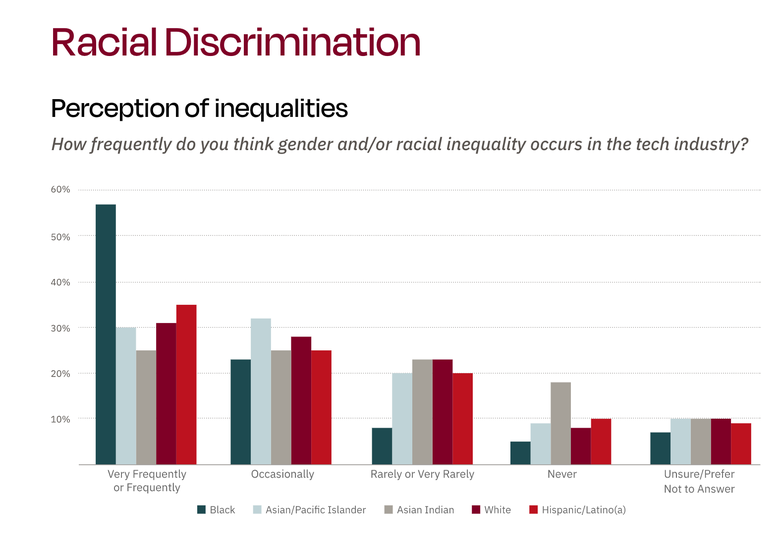
Note: Dice also included options for “Native American/American Native” and “Other races” in their survey, but did not include data from these groups due to small sample size.
2. Black technologists reported personally experiencing racial discrimination, too.
Not only did they say that it occurs, but half of Black technologists also said they experienced racial discrimination firsthand—up slightly from 48% in Dice’s last survey. And Black tech workers aren’t the only ones. Twenty-eight percent of AAPI technologists, 25% of Hispanic/Latinx technologists, and 21% of Asian Indian technologists have also personally experienced racial discrimination.
3. Thirty-seven percent of white technologists reported seeing no racial discrimination and 34% of men said they had not witnessed any gender discrimination.
The survey asked what kinds of racial or gender discrimination all respondents had witnessed in the tech industry—no matter who it was directed at. Keep in mind that this survey is about perception—what one person may experience as discrimination may not be perceived that way by someone else, even if they did in fact witness it (and it’s still discrimination, to be clear).
4. Different racial and gender groups tend to notice different types of discrimination.
Black respondents were most likely to witness discrimination (against any racial group) in the form of a lack of leadership opportunities (53%); AAPI technologists were most likely to witness a lack of promotional opportunities (35%); and Hispanic and Latinx tech workers most often witnessed salary and hiring discrimination (both 31%).
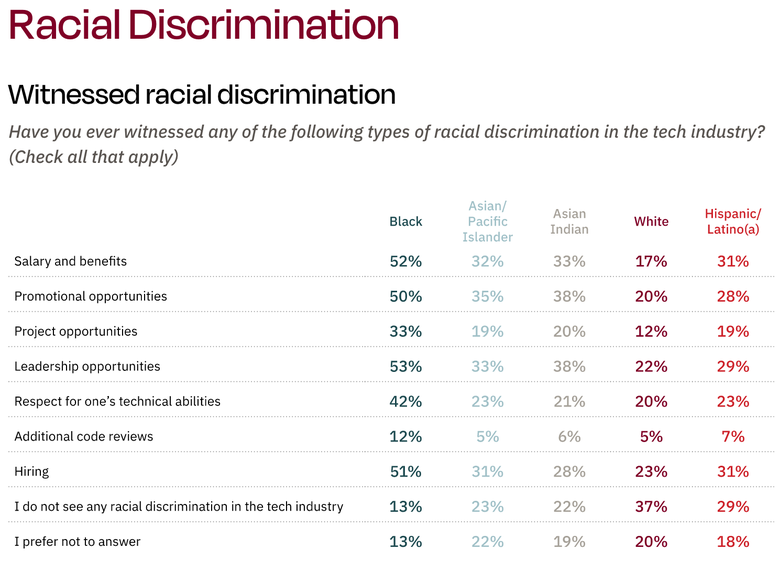
Along gender lines, women were most likely to report witnessing discrimination in salary and benefits (54%) followed closely by leadership opportunities (50%), promotional opportunities (49%), and respect for one’s technical ability (49%).
Also of note: Women and Black employees in tech were by far most likely to report they’d witnessed discrimination in the form of lack of respect for someone’s technical abilities.
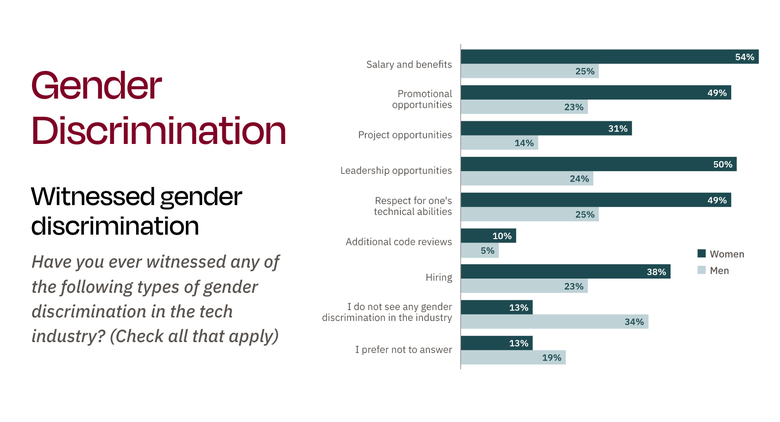
Note: When we refer to women and men in this article, we’re referring to those who identified as such in the survey. Dice did have options for “nonbinary” and “other” genders but did not include the data due to small sample size.
5. Nearly half of all tech workers have an issue with their compensation.
White tech workers were by far the most likely to be somewhat or very satisfied with their compensation—the only racial group where more than half of respondents felt this way—while Hispanic and Latinx technologists were most likely to be somewhat or very dissatisfied.
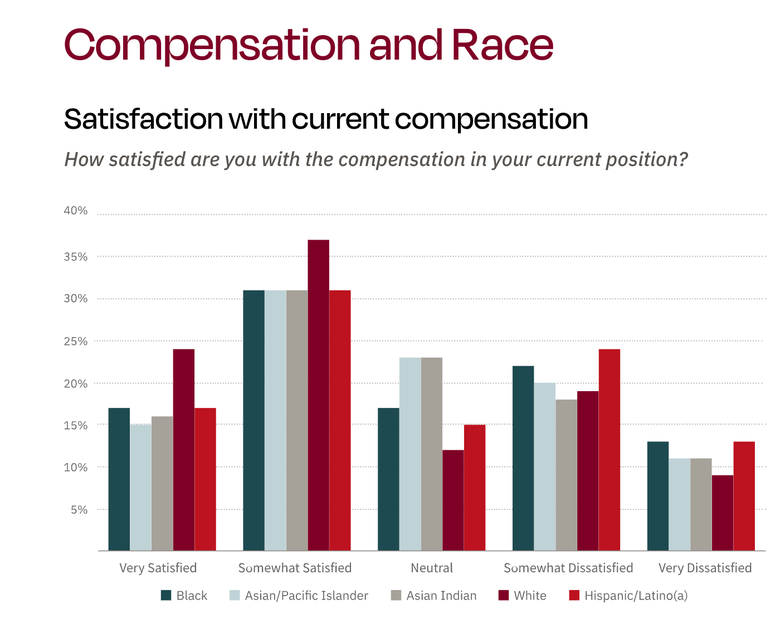
Further highlighting dissatisfaction with compensation—more than half of respondents in all non-white racial groups reported feeling underpaid relative to others in their same role
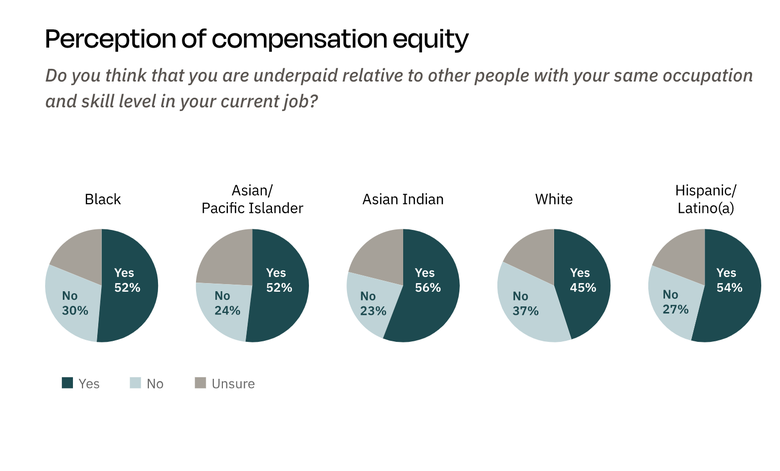
Obviously, this shows a disparity between white workers and other groups in tech. But even then, less than two-thirds of white technologists indicated that they were satisfied with their salary and 45% believe they’re underpaid. “While the disparity between ethnicities is notable,” the report said, the fact that nearly half of white workers—the group most satisfied with their compensation—were still feeling underpaid “speaks to compensation continuing to be a major issue in tech.”
Looking at gender, a similar trend emerges: Fifty-eight percent of men said they were very or somewhat satisfied with their salaries—compared to 53% of women. And 47% of men believe they’re underpaid, compared to 50% of women.
6. Women in tech negotiate salary as much as men do.
One of the common explanations for the gender wage gap cited by experts and overly opinionated talking heads alike is that women are less likely to negotiate for a higher salary. But in Dice’s survey, this wasn’t the case: Men were only slightly more likely to have negotiated for a higher salary the last time they switched companies, and women were more likely to have negotiated for higher salaries when being promoted or at salary reviews.
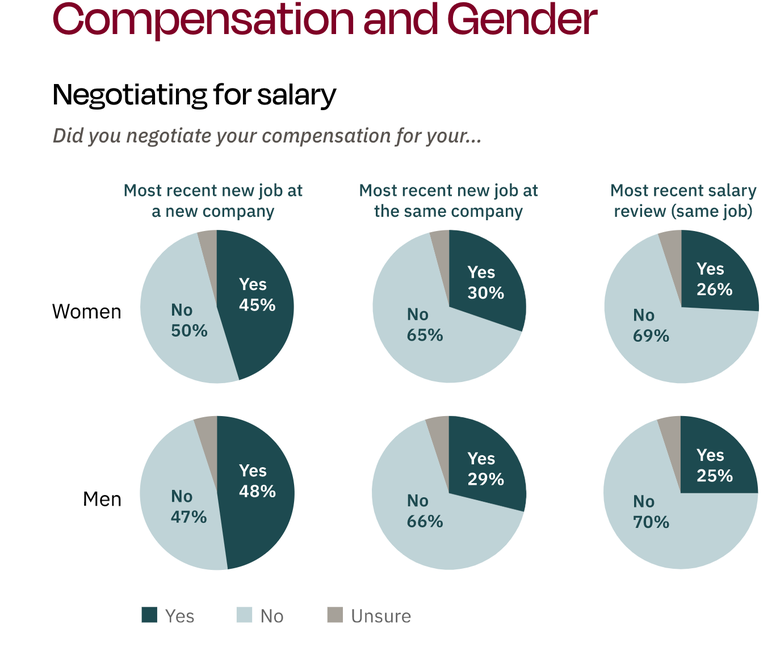
Dice found a similar trend between white respondents and other racial groups. White technologists were slightly more likely to negotiate when starting at a new company, but most other racial groups were more likely to negotiate when moving jobs at the same company or at salary reviews.
Yet gender and racial wage gaps persist, and women and racial minorities continue to feel underpaid and dissatisfied with their work at higher rates than their more privileged colleagues. It’s yet another reminder that the tech industry needs to work on dismantling other contributors to the wage gaps rather than telling people from disadvantaged groups to negotiate more often or more aggressively (which research shows can actually worsen the outcome for women).
7. While burnout rates differ among racial and gender groups, the reasons for burnout are largely the same.
Respondents who said they were burnt out were asked to select the top two reasons from a list of options—and across every racial and gender group, they were the same:
- Number of hours worked
- Size of workload
The least common cause for burnout among almost all groups? Having to work remotely.
So remote work doesn’t lead to employees phoning it in, but having to work too much or too long does, contrary to what some leaders insisting on returns to the office may think.
8. Salary is the top reason for tech workers of all groups to want to change jobs.
According to Dice’s survey, Asian Indian and Black technologists were most likely to anticipate changing jobs in the coming year—at 43% and 39% respectively. While white technologists (26%) and those identifying as men (29%) were least likely.
But the top reason for switching jobs was also the same across every racial and gender group:
It’s money. People want to be paid more. As the report put it: “Money isn’t everything, but it must be part of the equation; essentially, if an organization is perceived to have the funds to pay higher salaries, conventional wisdom suggests that now is the time to make those allocations.”